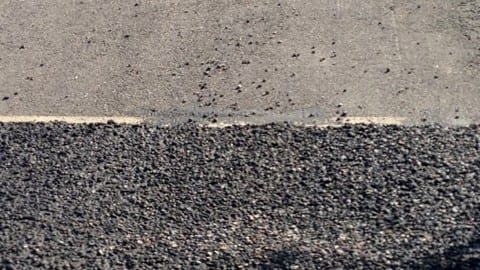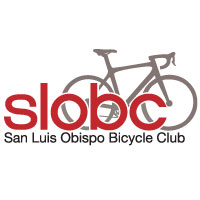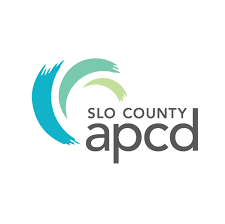Update: Highway One Chip Seal Treatment
Last year, Caltrans used a larger than normal aggregate to resurface a portion of the world renowned Highway One route north of Cambria. As part of this resurfacing, the roadway became incredibly rough for bicycles and kicked up small rocks into the path of both bicycle riders and motorists. This safety issue has made its way from local to state to national news through popular bicycle groups.
- Potholes, some several inches deep, are seen outlined in the bike lane after having been camouflaged by the repaving. SLO Tribune. Photo by Joe Johnston
- Zoomed way out (old surface top vs new surface bottom)
Soon, thanks to the efforts of numerous advocacy groups, this 20 mile section of roadway will be remedied to provide sufficient smoothing! After a series of test treatments as part of a study by the UC Davis Pavement Research Center, a sand seal will be applied to a portion of the roadway before moving forward with the remaining roadway. The test sand seal is set to be applied in 3-4 weeks.
From an official Caltrans statement:
“I am happy to announce through our association with the UC Davis Pavement Research Center and input from the cycling community, Caltrans is preparing to begin work on Hwy. 1. With this fact based decision we are now moving forward with finding a solution for resurfacing Highway 1. While the full report continues to undergo review, enough information is available to begin work on Highway 1,” said Caltrans District 5 Director Tim Gubbins.
The results of this study indicate a sand seal treatment is expected to be effective in smoothing the surface of Highway 1. Caltrans will apply a sand treatment to a short test section of Highway 1. A sand seal is a sprayed application of asphalt emulsion followed by a covering of clean sand or fine aggregate.
This is great news for coastal riders, upcoming fundraising rides which use this beautiful route, and motorists who don’t want rocks flung at their windshields.
The selection of this surface treatment follows work by the UC Davis Pavement Research Center and Caltrans that tested eight sections of surface treatment on State Route 198 in Monterey County.
A sand seal was applied to one of the test sections and resulted in an improvement on the highway, according to feedback from cyclists and specialized equipment used to measure the texture of the highway.
Your Bicycle Coalition will be sure to keep you up to date as the process moves forward. In the meantime more news on the subject is available online for your review:
- Caltrans to test fix for rough stretch of Hwy. 1 north of Cambria – SLO Tribune
-
Highway One Chip Seal Update – Caltrans









